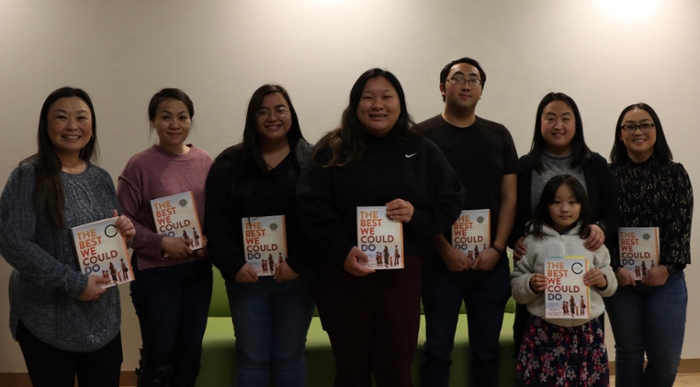Join the Book in Common Community Read Challenge in March and read Thi Bui’s The Best We Could Do in preparation for the author’s visit to campus on April 5.
This week’s challenge features reflections from Asian American-identified students, staff, and faculty from a discussion group hosted by the Asian American Studies Program and the Multicultural and Gender Studies Department. For additional information, reach out to Professor Choua Xiong at cpxiong3@csuchico.edu(opens in new window).

What does it mean for you as Asian Americans to read The Best We Could Do as the Book in Common at Chico State?
“It means a lot because being a student who lives away from home, reading this book helps me remember my culture, roots, and family. It is great to have an environment where I can relate to others and feel safe to discuss our culture and identity as Asian American students.”
“It’s great that I can find a book I can connect with. I would say I see a lot of parallelism with the lack of emotional connection between parents and children. I was not expecting to feel like I was in Thi's shoes; how Thi talked about her mom not saying, ‘I love you’, which is a norm in my culture. Sometimes the atmosphere gets uncomfortable when talking about emotional things with the elders. However, there's also the norm that our parents' love is expressed through actions, which Thi also spoke of. And although we may not directly hear how much they love us, we can see how deeply they love us.”
“As an Asian American, I often feel invisible, but reading The Best We Could Do makes me feel seen. I feel that this book highlights some of the struggles that Asian Americans experience and it is something not talked about enough. I can resonate with the book and the characters, which is uncommon due to the lack of diversity, voices, and narratives of Asian American experiences and characters.”
What themes did you find the most impactful?
“The theme I find most impactful from this book is when the author talks about her parents—growing up in a strict Asian household, I can definitely relate.”
“A theme that I found impactful was the common love language, acts of service, that many Asian families have and the love they have for each other. The theme was impactful because I have yet to read a book that portrays the way most Asian families function with acts of service and love. There are many occasions when in Asian families it is hard for us to convey our feelings because it is ‘weird’ or ‘awkward,’ and so we show our love through acts of service.”
“The WHOLE book was impactful. If I had to choose specific themes, the themes that remain with me are around understanding our lives from a critical historical perspective, how traumatic conditions (e.g., war violence, discrimination) can shape cultural values, and the enduring and evolving love we carry for loved ones.”
